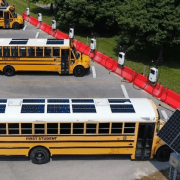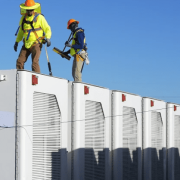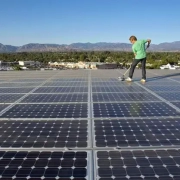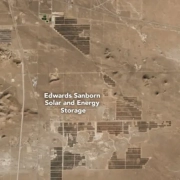New York City utility Con Edison will need to be able to charge about 10,000 electric school buses on its constrained power grid within the next 10 years or so. A $9 million pilot project in Brooklyn could help it figure out how to do that.
The project is starting small. Four battery-electric school buses are onsite today, with 12 more expected by the start of next school year. They’ll be bolstered by a 500-kilowatt solar array and a 2-megawatt-hour battery onsite, as well as by solar panels on some of the buses themselves.
Click here to read the full article
Source: Canary Media
—
If you have any questions or thoughts about the topic, feel free to contact us here or leave a comment below.




